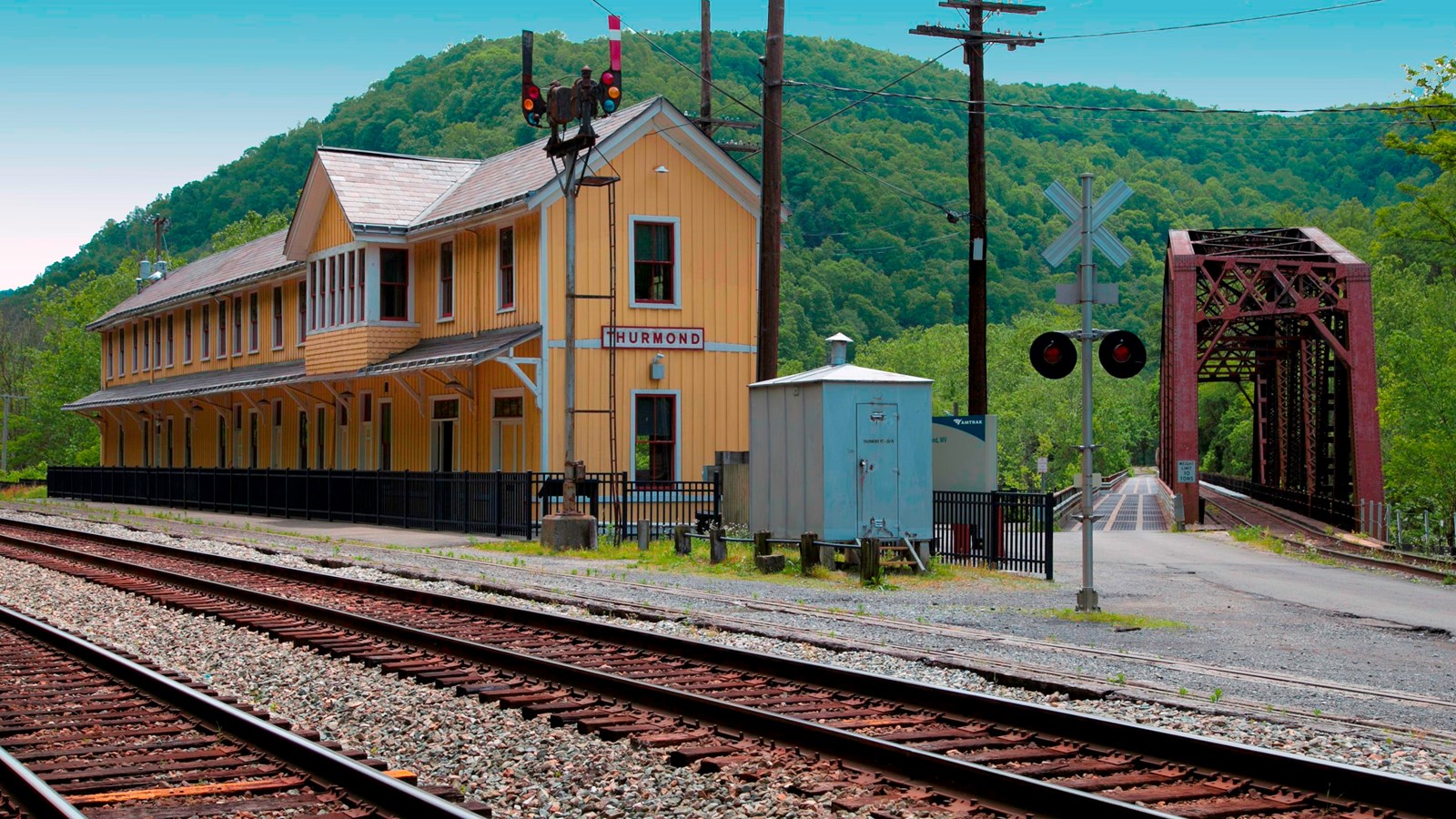Last updated: April 19, 2021
Place
Thurmond Historic District

NPS photo/Louis McLaughlin
Accessible Sites, Benches/Seating, Elevator, Gifts/Souvenirs/Books, Historical/Interpretive Information/Exhibits, Information, Information - Maps Available, Parking - Auto, Restroom - Accessible, Trash/Litter Receptacles
During the first two decades of the 1900s, Thurmond was a classic boomtown. With the huge amounts of coal brought in from area mines, it had the largest revenue on the Chesapeake & Ohio Railway. Having many coal barons among its patrons, Thurmond's banks were the richest in the state. Fifteen passenger trains a day came through town-its depot serving as many as 95,000 passengers a year. The town's stores and saloons did a remarkable business, and its hotels and boarding houses were constantly overflowing. With the advent of diesel locomotives, and less coal coming in from local mines, the town began a steady decline. The many businesses closed down, and most residents moved on.
Today, the town of Thurmond remains surprisingly untouched by modern development. It is a link to our past, and a town with many stories to tell. New River Gorge National River invites visitors to experience the impact of the industrial revolution, and the mission of the National Park Service to preserve our nation's heritage.
To reach Thurmond, take U.S. Route 19 to the Glen Jean exit, north of Beckley. Follow the signs to Thurmond, seven miles down WV Route 25 (Route 25 is a narrow, winding road and is not recommended for RVs and trailers).
Thurmond in Prosperous Times
The year 1873 marked the completion of the Chesapeake and Ohio Railway mainline. It was also the year that Captain W. D. Thurmond acquired 73 acres along the railroad, a strategic position for developing a town.
Thurmond was the heart of the New River Gorge, carrying shipments of coal from the surrounding coal fields. The town of Thurmond grew as the coal and timber industries expanded in the gorge. The rail yard was expanded to meet the railroad’s needs. By 1910, Thurmond was the chief railroad center on the C&O Railway mainline.
In 1910, the C & O operation at Thurmond was first in revenue receipts, producing more freight tonnage than Cincinnati, Ohio, and Richmond, Virginia, combined. Freight was not the only key to this town’s success. Seventy-five thousand passengers passed through Thurmond in 1910, delighting in all it had to offer.
At its peak, Thurmond had two hotels, two banks, restaurants, clothing stores, a jewelry store, movie theater, several dry-good stores, and many business offices. The town continued to thrive through the early decades of the 20th century.
Thurmond in Decline
With the onset of the Great Depression, several businesses closed, including the National Bank of Thurmond. The town’s economic vitality waned after two large fires wiped out several major businesses.
By the mid 1930s there were other indications that Thurmond’s heyday was ending. The American public had begun its love affair with the automobile, and good roads made travel by car easy. C & O Railway changed from steam to diesel locomotives in the 1940s. Thurmond had been a steam town, its rail yard and crews geared toward the short service intervals of steam locomotives. The switch to diesels left many of the rail yard structures and jobs obsolete.
Once the heart of the New River Gorge, Thurmond remains its soul. Memories continue to be made here in the 21st century. The town is still incorporated and hosts an annual reunion for former residents.
Stabilizing Thurmond’s Past for the Future
The Thurmond Depot was restored as a visitor center by the National Park Service in 1995. There are over twenty other park-owned structures in Thurmond. The National Park Service began a stabilization program in 2003, including repairs to preserve buildings until the time that they can be rehabilitated or restored. Work includes removal of overgrown vegetation, improvement of drainage around the buildings, installation of more permanent metal panel roofs and gutters, removal of hazardous porches and additions, the installation of window louvers to provide adequate interior ventilation and some exterior restoration work.
